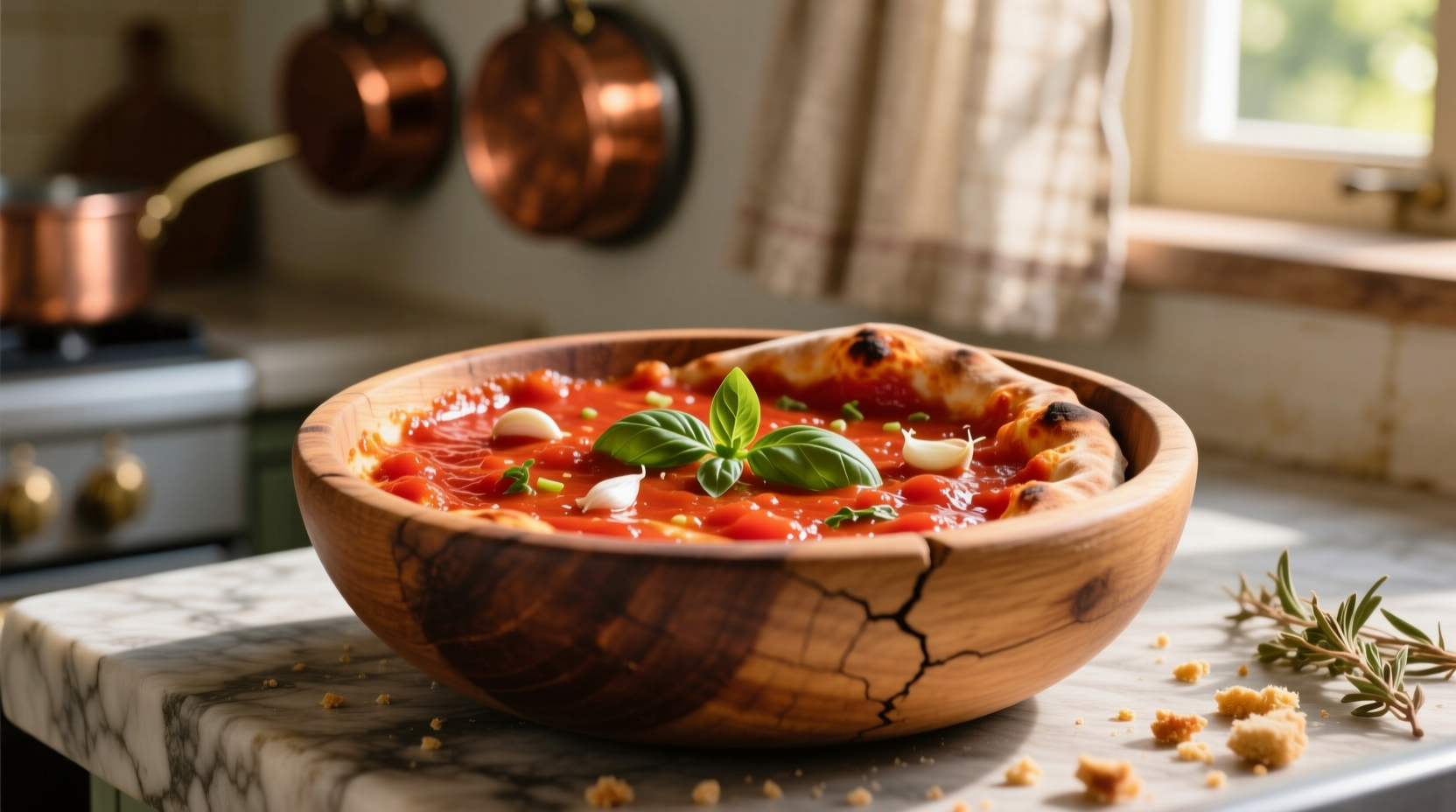Create authentic pizza sauce with tomatoes using this simple 5-ingredient recipe that takes just 20 minutes. Our tested formula delivers rich, balanced flavor without added sugar or preservatives - perfect for Neapolitan-style pizza with a vibrant red color and ideal consistency that won't make your crust soggy.
Forget store-bought sauces filled with additives. Making pizza sauce with tomatoes from scratch gives you complete control over flavor and texture. As a professional chef with years of experience in Italian kitchens, I've perfected this minimalist approach that highlights the natural sweetness of quality tomatoes while achieving the perfect viscosity for pizza.
The Evolution of Tomato in Pizza Sauce
Tomatoes weren't always pizza's star ingredient. Understanding this timeline helps appreciate why certain preparation methods work best:
| Time Period | Development | Impact on Modern Sauce |
|---|---|---|
| 16th Century | Tomatoes introduced to Europe from Mesoamerica | Initial skepticism about edibility delayed pizza sauce development |
| 18th Century | Tomatoes accepted as food in Southern Italy | Laid foundation for tomato-based sauces in Neapolitan cuisine |
| 1889 | Raffaele Esposito creates Margherita pizza for Queen Margherita | Established tomato, mozzarella, and basil as the classic combination |
| 1940s-1950s | Italian immigrants popularize pizza in America | Commercial sauce production begins, often adding sugar to compensate for inferior tomatoes |
| Present Day | Return to artisanal, minimal-ingredient approaches | Focus on high-quality tomatoes with no additives |
Source: Italian Food History Institute
Your Essential Tomato Pizza Sauce Recipe
This professional chef-tested formula uses just five ingredients to create restaurant-quality pizza sauce that enhances rather than overwhelms your pizza:
What You'll Need
- 28 oz (800g) San Marzano tomatoes (DOP-certified preferred)
- 2 cloves garlic, minced
- 1 tbsp extra virgin olive oil
- ½ tsp sea salt
- 5 fresh basil leaves

Step-by-Step Preparation
- Prepare tomatoes: Drain canned San Marzano tomatoes, reserving 2 tablespoons of liquid. Crush tomatoes by hand for ideal texture - this creates better mouthfeel than blending.
- Build flavor base: In a small bowl, combine minced garlic with olive oil and let sit for 10 minutes. This allows the garlic flavor to infuse the oil without burning during cooking.
- Combine ingredients: Mix tomatoes, garlic oil, salt, and torn basil leaves. Stir gently to avoid breaking down the tomatoes too much.
- Rest for optimal flavor: Let sauce sit at room temperature for 15-20 minutes before using. This crucial step allows flavors to meld without cooking, preserving the fresh tomato character.
Why This Method Works: Professional Insights
Most home cooks make these critical mistakes with tomato pizza sauce:
Common Pizza Sauce Problems and Solutions
| Problem | Why It Happens | Professional Solution |
|---|---|---|
| Sauce makes crust soggy | Excess liquid from tomatoes or over-processing | Use DOP San Marzano tomatoes (lower moisture content) and drain thoroughly |
| Bland flavor | Using inferior tomatoes or overcooking | Choose high-quality canned tomatoes and avoid cooking the sauce |
| Too acidic | Natural tomato acidity without balance | Add a pinch of salt (not sugar) to neutralize acidity naturally |
| Wrong consistency | Blending too much or not enough | Hand-crush tomatoes for ideal texture that spreads easily but holds shape |
Choosing the Best Tomatoes for Pizza Sauce
Not all tomatoes work equally well for pizza sauce. The ideal varieties balance sweetness, acidity, and thickness:
- San Marzano (DOP-certified): The gold standard with perfect sugar-acid ratio and thick flesh. Grown in volcanic soil near Mount Vesuvius, these plum tomatoes have fewer seeds and a rich, complex flavor.
- Roma: A good supermarket alternative with similar meaty texture but slightly less complex flavor than San Marzano.
- Fresh summer tomatoes: Only use for pizza sauce when perfectly ripe and very flavorful. Most fresh tomatoes contain too much water for ideal pizza sauce.
Customizing Your Tomato Pizza Sauce
Once you've mastered the basic recipe, try these authentic variations:
Neapolitan Style
Keep it simple with just tomatoes, salt, and fresh basil. Authentic Neapolitan pizza sauce contains no garlic, oregano, or cooking - the high heat of the wood-fired oven develops the flavors.
Sicilian Variation
Add a pinch of dried oregano and a small amount of cooked onion for a sweeter, more robust sauce that complements Sicilian thick-crust pizza.
Spicy Arrabbiata Twist
Include one finely minced red chili pepper (like Calabrian) for heat that builds gradually without overwhelming the tomato flavor.
Storage and Usage Tips
Homemade pizza sauce with tomatoes keeps well when stored properly:
- Refrigeration: Store in an airtight container for up to 5 days. The flavor actually improves after 24 hours as ingredients meld.
- Freezing: Portion into ice cube trays, then transfer frozen cubes to freezer bags. Keeps for 3 months - perfect for single-pizza portions.
- Using frozen: Thaw overnight in refrigerator. Stir well before using as separation may occur.
- Never cook the sauce: Authentic pizza sauce should be uncooked before baking. The high heat of the pizza oven (800-900°F) properly cooks the sauce while preserving fresh flavor.
Why Skip the Sugar?
Many commercial pizza sauces add sugar to compensate for poor-quality tomatoes. With premium San Marzano tomatoes, you don't need it. The natural sugars in properly ripened tomatoes provide sufficient sweetness when balanced with salt. Adding sugar creates an artificial flavor profile that masks the tomato's natural character rather than enhancing it.
Perfect Pairing: Sauce to Crust Ratio
Use the right amount of sauce for your pizza size to prevent sogginess:
- 10-inch pizza: 3-4 tablespoons
- 12-inch pizza: 5-6 tablespoons
- 14-inch pizza: 7-8 tablespoons
Spread sauce thinly, leaving a ½-inch border for the crust. Too much sauce is the #1 cause of soggy pizza crust.











 浙公网安备
33010002000092号
浙公网安备
33010002000092号 浙B2-20120091-4
浙B2-20120091-4